This post may contain affiliate links. Read our disclosure policy.
The idea to write this article came about when chatting with a friend who doesn’t bake from scratch often.
She was sharing with me some of her baking challenges and I realized she was using ingredients and equipment I would never use. And they were setting her up for failure and frustration.
So I thought I’d round up some of the ingredients I avoid in my baking and the reasons WHY to give you simple and maybe unexpected insights into the sweet science of baking.
Shortening
I kind of hate shortening.
It’s butter’s greasy, bland, and weird manufactured cousin.
Shortening’s lack of flavor and high melting point is what steers me away from using it 90% of the time.
Butter is so wonderful because of its incredible taste. Part of the reason it’s so enjoyable to eat something with a lot of butter is because its melting point is around human body temperature (95°F). It gives literal meaning to the idea of something “melting in your mouth.”
Shortening, on the other hand, has a higher melting point at about 120°F. This can leave behind what feels like a greasy film or residue on your palette.
Yes, it can also make shortening easier to work with in pastry applications since the dough won’t warm up as quickly. But it also doesn’t offer the same benefits of butter in SO many other ways. Just take a look at the examples below to get a quick insight.
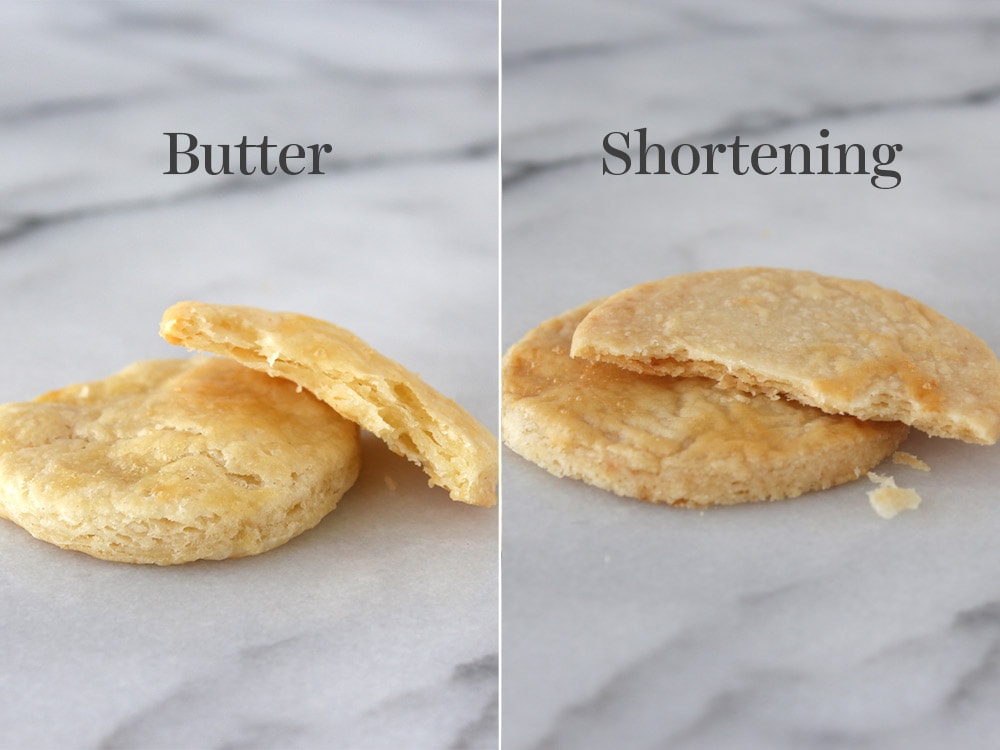

Bottom line? Butter all the way.
Learn more about Butter vs. Shortening here.
DIY Buttermilk
Simply put? DIY Buttermilk made by combining milk with an acid (vinegar or lemon juice usually) is *not* the same thing as actual buttermilk. The taste and texture this substitute offers usually falls very short of the real thing.
This is especially true in recipes where buttermilk plays a starring role, such as biscuits or pancakes. I can’t remember the last time I used a DIY buttermilk substitution instead of just adding buttermilk to my shopping list.
You can learn more about Buttermilk and see my experiments with different substitutes here.
DIY Cake Flour *or* Unbleached Cake Flour
This is really two different ingredients but I’m categorizing it into one to keep things simple.
DIY Cake Flour, in my opinion, is one of the biggest scams of all baking substitutions. It’s not even close to the real thing and since flour is literally the structural backbone of whatever you’re baking, it truly matters.
Real cake flour is harvested from a very specific type of wheat variety and processed in a very specific way.
Adding cornstarch and sifting all-purpose flour does not get you the same result:
So if you’re following a recipe that uses cake flour, I always insist you use the real thing.
But that opens another question… Do you use bleached or unbleached cake flour?
The answer is BLEACHED.
Now I know that may not sound particularly appealing in a food product (but in reality it’s not that different from the processes used to filter your bottled water).
This one factor in this one ingredient makes a world of difference in the science of your baking. If you’ve ever had a cake, particularly a delicate one like angel food cake, come out flat and wrong, it may be because you made the mistake of using unbleached cake flour.
The bleaching process further weakens the proteins in cake flour (which are already weak due to the variety of wheat used) which prohibits gluten formation. This leads to a more soft and tender texture. Bleached flours generally soak up more water and produce thicker batters to allow cakes to rise taller and more evenly.
Learn more about Cake Flour here.
Farmer’s Market Eggs
I love the farmer’s market. I go almost every weekend.
I love to cook breakfast with fresh eggs from the local farms.
But I never use farmer’s market eggs or local ungraded eggs in my baking. Unless I weigh them first.
Why? The size of your egg can make a huge impact in your baking.
TIP: when it comes to brown eggs vs. white eggs, there’s virtually no difference.
In most modern recipes large eggs are called for. Whatever size egg the recipe calls for, use that specific size.
The difference between small eggs and extra large eggs can be a 50% difference! So if you use farmer’s market eggs or eggs from your chicken coop without weighing them first to see what USDA size they fall under, the entire structure and chemistry of your recipe could be negatively affected.
Salted Butter
I only ever use unsalted butter in my baking.
The primary reason? There’s no federal mandate about how much salt brands put in salted butter. Some brands can be nearly twice as salty as others, giving you no control over the final salt content in a recipe.
There are other reasons, which you can read about in my post on Salted vs. Unsalted butter here.
Iodized table salt
When I’m baking, I like to use fine sea salt. It dissolves into a batter or dough nicely (unlike kosher salt) and has a pleasant taste.
Iodized table salt tastes awful. If you don’t believe, do a side-by-side taste test… then toss your iodized table salt and use fine sea salt instead.
Sugar substitutes
Sugar does a lot more than simply sweeten foods. It’s responsible for a number of chemical reactions in baking and actually helps contribute moisture to baked goods.
Replacing the sugar called for in a recipe with something like honey or maple syrup will completely alter the moisture level of the batter or dough… among other things.
Low cal sugar substitutes (like Truvia), on the other hand, often lend dry, crumbly, hard, textures and off flavors. King Arthur Flour recently posted a great article comparing sugar alternatives here.
I firmly believe dessert should be an indulgence, which is why I almost exclusively use real butter, sugar, and flour.
Obviously some people have food allergies or medical diagnoses to contend with, and for those people my website is simply not the right place because there’s so many other bloggers creating amazing content for those needs.
“Natural” Peanut Butter
When I say “natural,” I’m referring to peanut butter products that just contain roasted ground peanuts (and maybe salt). Basically any peanut butter that doesn’t contain added palm or hydrogenated oil. At the very least there needs to be some kind of added oil.
These natural peanut butter products simply don’t work well in baking. The naturally occurring oil in the peanut separates from the mix and makes it difficult to use in a recipe. It also creates a more dry and crumbly texture in baking without that additional fat.
Conventional peanut butter is the only kind I use inside a recipe.
KEY TAKEAWAY? INGREDIENTS MATTER!
At the end of the day, baking truly is a science. And that knowledge can be empowering instead of intimidating. Because if you take the time and attention to go one step further than a lot of people when the bake from scratch, your results will be consistently more amazing.
This is exactly why I hate baking substitutions and have recently enacted a “no sub” policy here at Handle the Heat.
You can do whatever you want with my recipes, but I create them using specific ingredients for very specific reasons. It’s often a painstaking process to develop a new recipe and when changes are made to my recipes, I simply can’t guarantee the results will be as good.
Now I’m curious to hear from you… what ingredients do you avoid in baking??

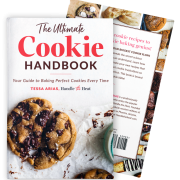
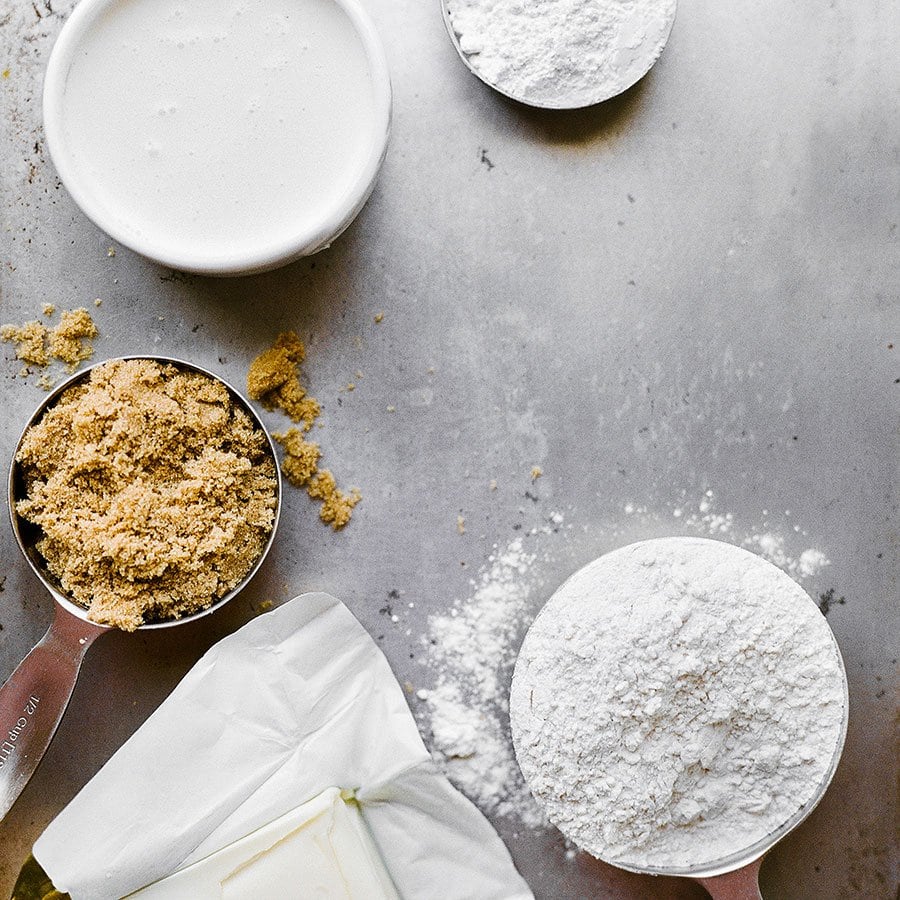
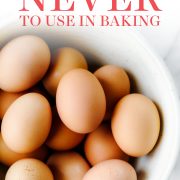
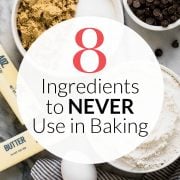
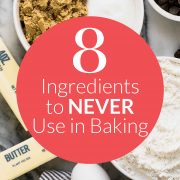
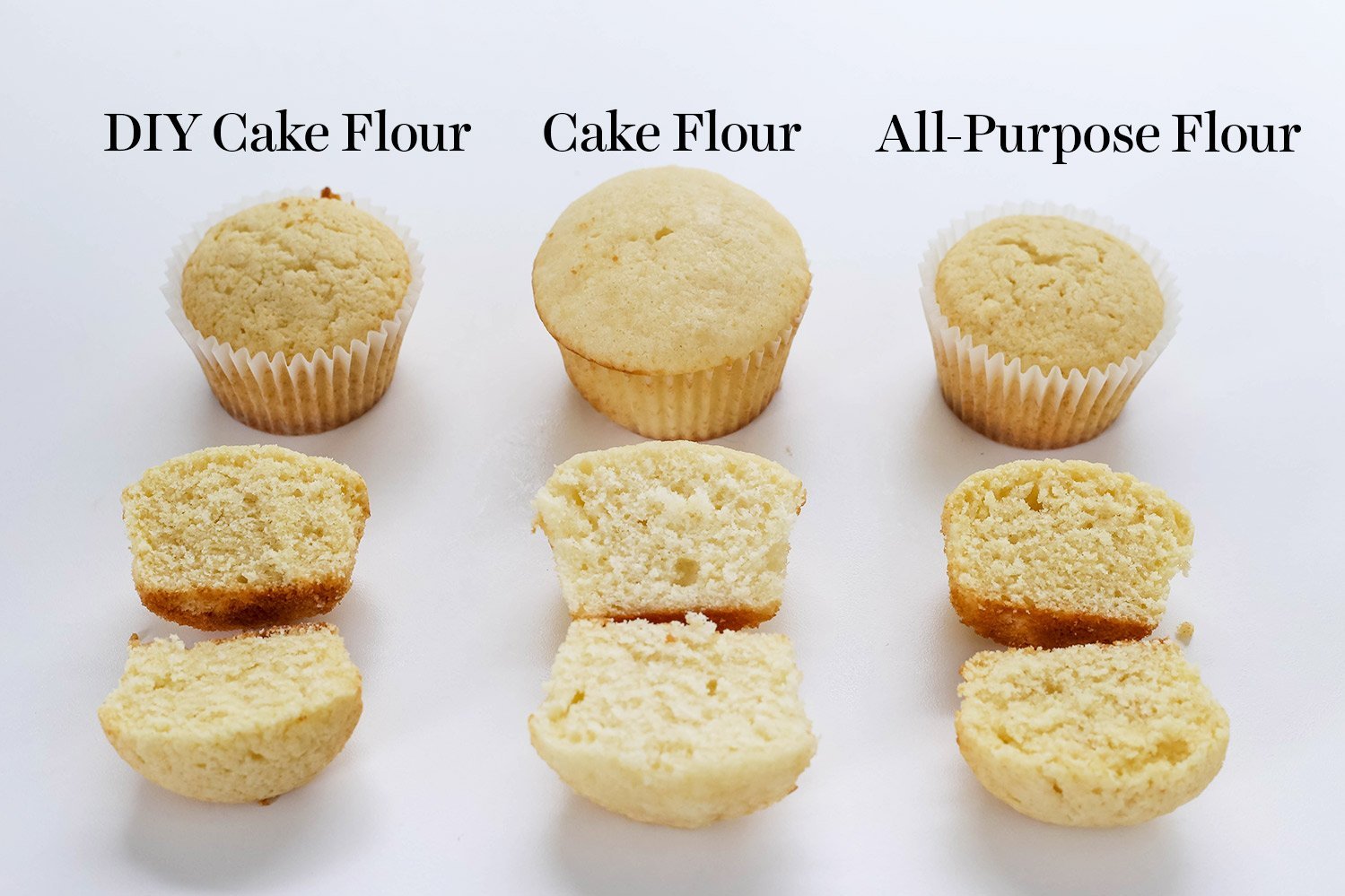

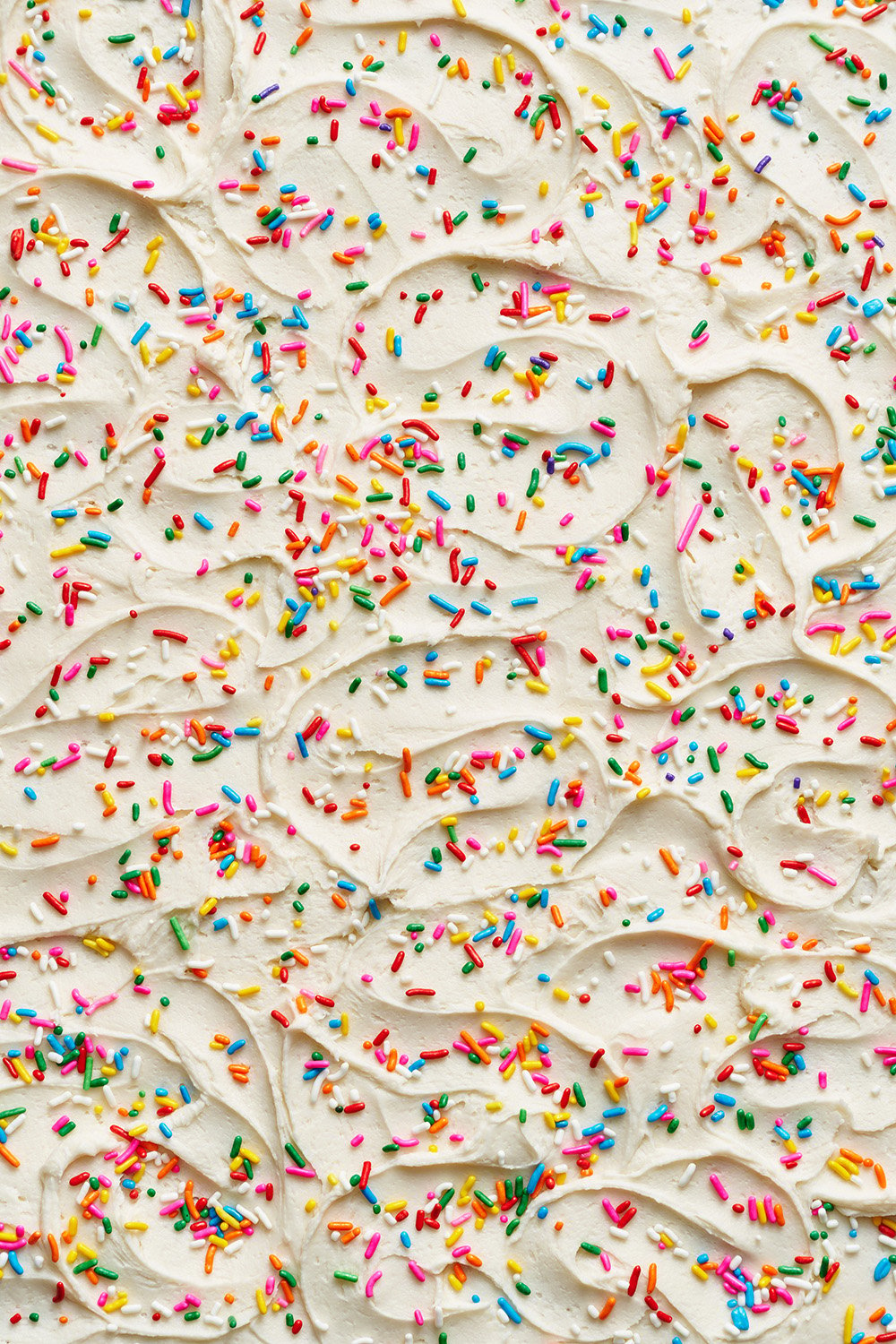
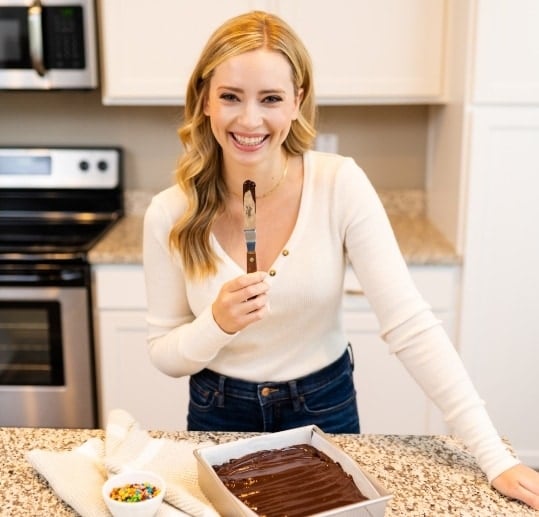

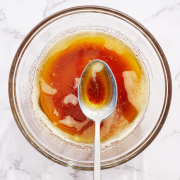
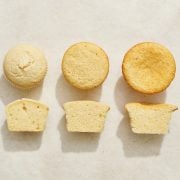
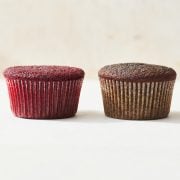
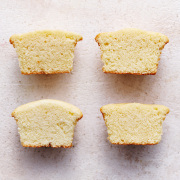
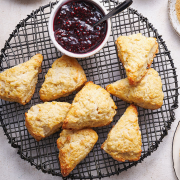
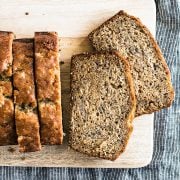
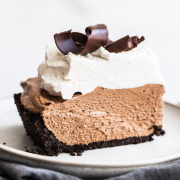
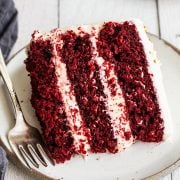








Ok you say shortening verses butter. Are you talking margerine??
Hello Tessa. I found this article very interesting. Thank you.
I am a 71 year-old woman, born and raised in the greater Los Angeles area. I have been baking most of my life—cookies, cakes, pies, tarts, etc.—just a home baker, it a pro like you!
I have to weigh in on one point you made in re: Unsalted vs Salted Butter—
I only use salted butter when baking my chocolate chip cookies(to which I add toasted pecans). Have always done so, and friends and family rave!!! They cannot figure out what makes mine extra specially delish!
The salt the recipe calls for, combined with the salt in the butter, gives the cookie an extra kick—like salted caramel!!! Absolutely delectable. Although I have made them with unsalted butter, those with unsalted do not compare! If you haven’t tried it, you ought to. It might change your mind.
We don’t get cake flour in Scotland we can only use DIY ☹️
Hi Tessa!
I poked around a bit before asking here, but was wondering if you have posted (or considered posting) a list of baking ingredients you always have on hand?
I am looking to bake more and expand on what I make, but I usually only keep the basics (AP flour, self-rising flour, cake flour, baking soda, baking powder, salt, white & brown sugar, vanilla & almond extracts, cocoa powder, baking chocolate).
What other kinds of things would you recommend I keep in my baking cabinet?
For instance, I saw ‘envelope of powdered gelatin’ on one ingredient list, is that something that’s considered a staple?
There’s nothing I love more than seeing a fun, new recipe and realizing I already have everything I need!
Thank you for any guidance you can offer! <3
Hi, I’m one of your followers from Philippines, here in our area buttermilk in not available, what are we going to use if you dont recommend using diy buttermilk, most of your recipes uses buttermilk.
I’ve been using unbleached AP flour for years, will have to experiment with the bleached type. Rarely use cake flour due to the expense.
Sugar? Only use pure Cane sugar A package that just says granulated sugar is most likely from beets, not sugarcane.
The only thing I’ve stopped using is pure vanilla extract. I now use a coconut liqour from Kaua’i. It makes such a remarkable difference…try it!
I completely agree with all of these!
Artificial vanilla! No thanks.
Brilliant Concept!! Keep up the Good Work!!
Pure buttermilk and kosher salt are not always available in my country so I can’t really agree with you.
Sorry, but most of this is nonsense. You hate shortening but exclusively use peanut butter with palm or hydrogenated oil..? Mmkay..
You are spot on about eggs. We have hens of various ages and breeds and no two eggs weigh the same.